Ever dreamed of spending a quiet morning casting a fly on a crystal-clear stream? Fly fishing is an awesome way to connect with nature, challenge yourself, and maybe even catch a delicious dinner.
But before you head out there, you have to make sure you’re dressed right for the job. This guide will break down everything you need to know about fly fishing attire, from what to wear in the blistering summer sun to how to stay warm and dry when the winter chill sets in.
Let’s get in.
What Should Fishermen Wear When Fly Fishing?
Fly fishing attire depends on the weather and how deep you plan to wade into the water. Here’s a breakdown of the best fly-fishing clothing.
Sun Protection:
- Hat: A wide-brimmed, waterproof hat protects your head, neck, and face from the sun.
- Shirt: A long-sleeved, breathable shirt with UPF protection is ideal for sun protection and keeping cool.
Base Layers:
- Warm Weather: opt for a moisture-wicking base layer in warmer weather to stay comfortable.
- Cold Weather: During colder months, a thermal base layer will help trap heat.
Outerwear:
- Waders: Waterproof waders are essential for wading into deeper water. Choose between neoprene for warmth or synthetic for breathability.
- Wet Wading (optional): In warm weather, opt for quick-drying shorts or pants and wading boots for shallow water.
- Rain Jacket: Pack a lightweight raincoat for sudden downpours.
- Fleece (optional): A fleece jacket provides extra warmth in cooler weather.
Other Gear:
- Polarized Sunglasses: These cut glare on the water, helping you spot fish.
- Fishing Vest: A vest with pockets is handy for storing fly boxes, tippets, and other essentials.
- Wading Belt: A secure wader belt is crucial to prevent water from filling your waders.
Note: Remember, layering allows you to adjust to changing weather conditions. Always prioritize safety and choose clothing that will keep you comfortable throughout your fly-fishing trip.
What Will Impact Clothing Choices For Fly Fishing?
A fly fisherman’s clothing choices are heavily influenced by two main factors: time of year and the environment they’ll be fishing in. Here’s a breakdown of what to expect and how to prepare:
Time of Year
- Temperature: This is the biggest factor. In warmer months, prioritize breathable, quick-drying fabrics like nylon or synthetics. Long sleeves are still recommended for sun protection but opt for lightweight options. In colder months, layering is key. Start with a moisture-wicking base layer like merino wool, followed by an insulating mid-layer like fleece, and a waterproof outer shell.
- Sun Exposure: The sun reflects harshly off the water, so sun protection is crucial year-round. Choose a wide-brimmed hat and a long-sleeved shirt with a high Ultraviolet Protection Factor (UPF) rating.
Environment
- Water Depth: Are you wading in shallow streams or deep rivers? Chest-high waders are essential for deeper water, while waist-high waders might suffice for shallower areas. In some cases, you might get away with just waterproof pants and wading boots if the water is low enough.
- Terrain: Rocky riverbeds or muddy banks? Sturdy wading boots with good ankle support and aggressive soles are crucial to prevent slips and falls. Consider adding cleats for extra grip on wet rocks.
- Weather Conditions: Be prepared for sudden weather changes. Pack a lightweight rain jacket and quick-drying pants that can handle a downpour.
Safety Consideration
- Polarized Sunglasses: These cut glare on the water, allowing you to see fish and navigate hazards. They also protect your eyes from UV rays.
- Fingerless Gloves: Protect your hands from line cuts, hooks, and sunburn. Choose breathable materials that allow dexterity for tying knots.
- Insect Repellent: Mosquitoes, flies, and other insects can be a nuisance. Pack a repellent suitable for use near water.
- First-Aid Kit: Be prepared for minor cuts, scrapes, or insect bites.
Seasonal Gear Choices For Fly Fishing
Here’s a breakdown of what to wear in summer versus winter:
Summer Fly Fishing Gear
- Waders: Breathable waders are still a good option in summer, especially if you’ll be wading deep or in cold water. However, some anglers opt for lightweight, quick-drying fishing pants if the water is shallow and warm.
- Base Layer: A lightweight, moisture-wicking base layer can help regulate temperature and prevent chafing.
- Sun Protection: A long-sleeved shirt made from a breathable, sun-protective material is a must. A wide-brimmed hat and sunglasses are also essential.
- Footwear: Wading boots are still a good option if you’ll be wading, but consider breathable wading shoes, fishing deck boots or sandals for hot weather if conditions allow.
- Other Considerations: Sunscreen, insect repellent, and a hydration pack are all important for summer fly fishing.
Winter Fly Fishing Gear
- Waders: Chest waders are essential for winter. They’ll keep you dry as you wade through streams and protect your legs from the cold water. Look for breathable waders with good insulation to trap heat.
- Base Layer: A moisture-wicking base layer is key for winter. Merino wool is a popular choice because it insulates even when wet.
- Mid Layer: An insulating fleece or puffy jacket is a must for warmth. Consider layering for easy temperature regulation.
- Outer Layer: A waterproof, breathable outer layer is essential for snow or rain. Look for a jacket with a hood for added protection.
- Footwear: Insulated fishing boots with good traction are crucial for keeping your feet warm and dry. Felt soles are great for gripping slippery rocks, but check regulations as they can be restricted in some areas.
- Headwear: A warm hat that covers your ears is essential. A beanie or fleece headband are good option.
- Gloves: Neoprene gloves are great for keeping your hands warm and dry in the water. Consider fingerless gloves for better dexterity when tying flies.
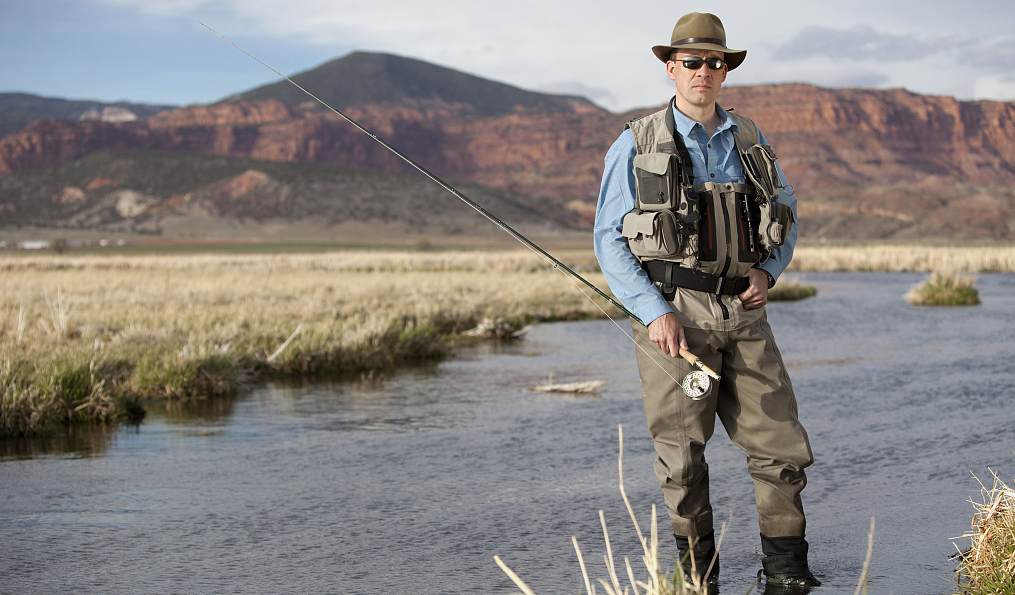
What Color To Wear For Fly Fishing?
The colors of clothing will affect fly fishing, although they may not be as significant as the other factors like that technique or type of fly.
While fishing, the clothing’s color that contributes to camouflage with the natural surroundings is recommended to be neutral and earthy in tone.
Using bright colors suspiciously may repel fish, and that is more likely to happen in clear water conditions.
Moreover, the color of your outfit influences your feelings about fish. Dark colors can absorb the hottest sun rays while light colors can reflect them, thus you will not feel warm.
It’s also important to bear in mind that other anglers and hunters could spot your clothing if you fish in areas where hunting for game is permitted.
However, there are some appropriate colors for it:
- Neutral tones: khaki, Olive, Brown
- Subdued tones: Grays, blues
- Earthy tones: Greens, browns
Fly Fishing With Or Without Waders?
Does it matter to wear a wader for fly fishing?
If you are into using fly fishing, wearing waders can very much make a better experience for you.
The waders are made of waterproof broads for your reliability in water when fishing in the water. They enable you to step into the spot where the water is too deep and shelter you from the elements.
Waders provide you with enhanced mobility in addition to leading you to the spots that are difficult to reach from the shore.
Fly fishing with waders can also help with your safety while out on the water. They insulate against cold water temperatures which minimize the risk of being hypothermic.
Furthermore, they can guard you against sharp rocks, slippery surfaces and other possible dangers in the water.
Here are some scenarios if yo should fly fishing with or without waders.
Fly Fishing Without Waders
- Small streams: If the stream is shallow enough to comfortably wade in with wading boots and pants or even just regular footwear, you can ditch the waders.
- Shore fishing on lakes or ponds: For calm, still waters, casting from a comfortable position on the shore might not require waders.
- Warm weather: In hot climates, especially if you’re only doing some light wading in shallow areas, waders can be hot and uncomfortable. Opt for breathable wading pants and sandals if needed.
- Early/late season fishing: If the water isn’t too chilly and the wading depth is manageable, you might be comfortable without waders during these shoulder seasons.
If you like fishing without waders, there are some other alternatives:
Wading boots and pants: A good option for shallow water wading. Look for breathable, quick-drying pants and boots with good traction.
Fishing sandals: For very hot weather and shallow water, breathable wading sandals can keep your feet cool.
Bibs: An excellent option for chilly conditions, fishing bibs provide generous protection and can help keep you both dry and cozy. They are built with waterproof material from legs to chest, making them a good choice for deeper waters.
Water Shoes: If the water is not too cold and there are no sharp objects on the ground, water shoes may be sufficient. These shoes are made for use in water, offering foot protection and providing excellent traction.
Fly Fishing With Waders
- Deep or fast-moving water: Waders are essential for safely wading in deeper sections or currents where wading boots wouldn’t suffice.
- Uneven or slippery terrain: Waders offer some protection from sharp rocks or uneven underwater surfaces.
- Cold or wet weather: For wading in cold or wet conditions, waders keep your lower body warm and dry.
- Reaching prime fishing spots: Fish often lurk near weed lines, banks, or areas with structure. Waders allow you to access these spots by wading in.
- Anytime you’re unsure: If you’re unfamiliar with the water depth or current, having waders on hand provides extra safety and wading flexibility.
If you choose waders, the following are things that can ensure a comfortable experience:
Proper fit: Not too tight or loose. Tight waders restrict movement, while loose waders can fill with water.
Layering: Wear breathable base layers and mid-layers to regulate temperature.
Wading belt: Keeps waders secure and prevents water from entering.
Wading staff: Provides balance and extra support when wading in fast-moving water.
Comprehensive Look For Fishing From Head to Toe
Here is what you need to wear for a terrific flying fish experience.
1. Hat
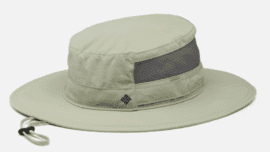
A wide-brimmed hat like the Columbia Unisex Bora Bora Booney Fishing Hat is a great option. It offers UPF 50 sun protection, a moisture-wicking sweatband, and mesh venting to keep you cool and dry. Plus, it’s unisex and comes in a variety of colors to match your style.
2. Shirt/hoodie
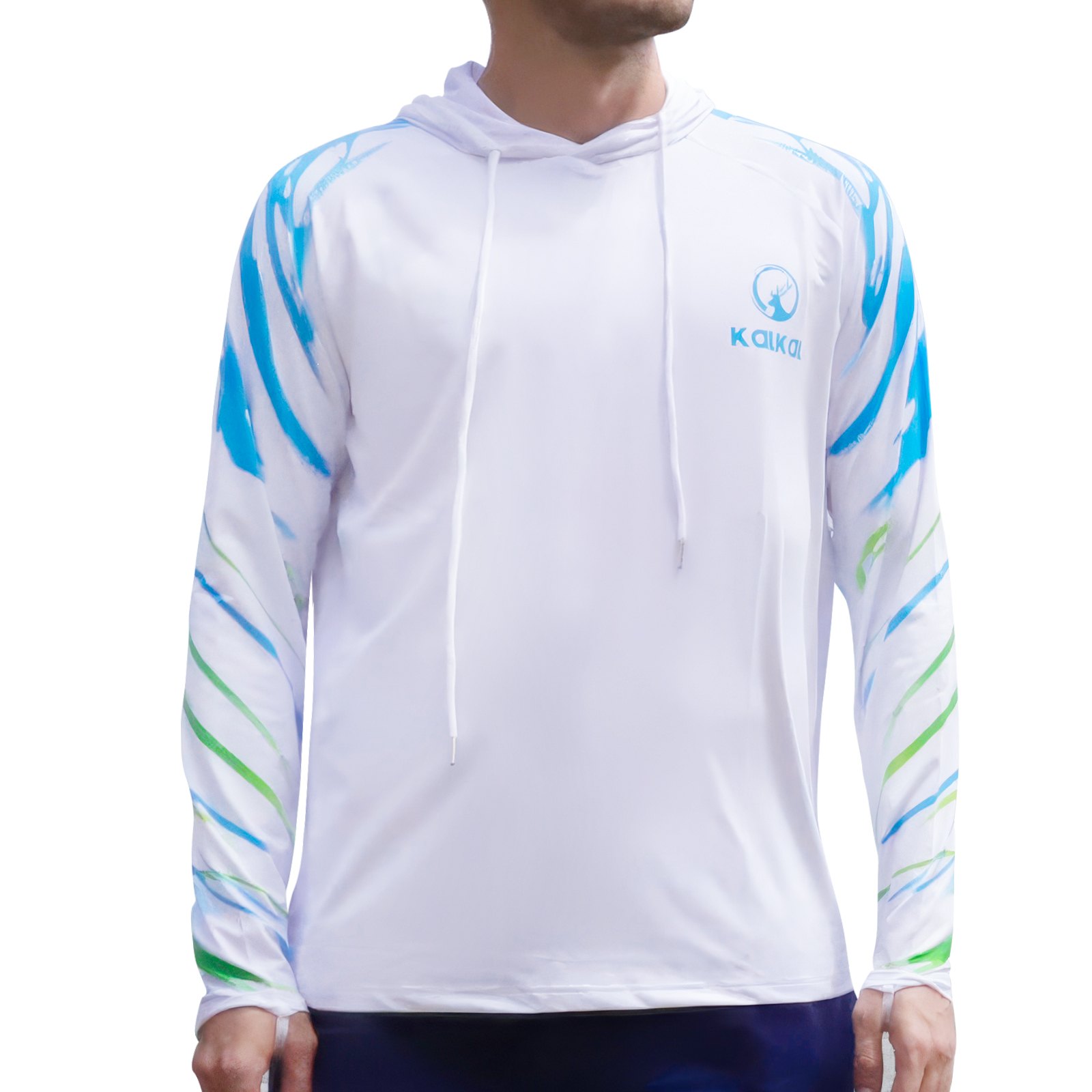
A quick-drying, moisture-wicking fishing shirt like the Kalkal Fishing Shirt with Hood and Mask is a versatile option. It offers UPF 50 sun protection and features advanced wicking fabric to pull perspiration away from the skin, keeping you dry and comfortable in warm or cool weather. This hoodie is also a great choice for layering under a wading jacket in colder conditions.
3. Pants
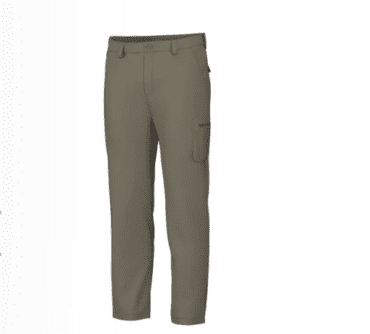
Quick-drying, water-resistant fishing pants like the HUK Men’s Quick-Drying Fishing Pants are a good option. They feature a blend of materials that dry quickly after wading through water and a durable construction that can withstand the rigors of fly fishing. They also come with features like cargo pockets, a gusseted crotch for mobility, and an adjustable waistband for a comfortable fit.
4. Fishing Deck Boots
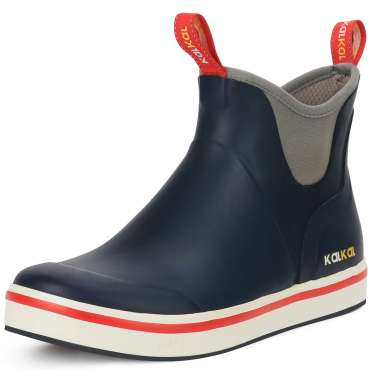
Kalkal Men’s Fishing Deck Boots are a good choice for fly fishing in warm or moderate climates. They offer a good balance of waterproof protection, traction on wet surfaces, and breathability. These shoes are also lightweight and comfortable for long days on the river.
5. Polarized Sunglasses
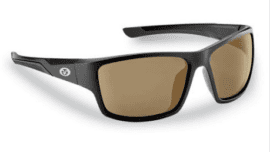
Invest in a good pair of polarized sunglasses like the Flying Fisherman SandBank Sunglasses. Their polarized lenses reduce glare on the water’s surface, allowing you to see fish and navigate hazards more easily. They are also available in a variety of lens colors to suit different lighting conditions.
6. Fishing Vest
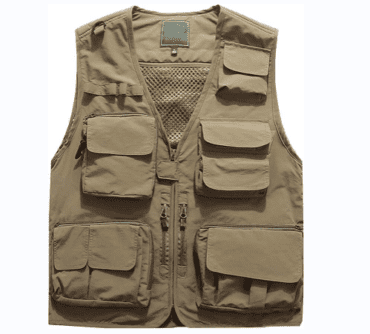
A functional fishing vest with plenty of pockets, like the Flygo Men’s Casual Fishing Vest is a good option for keeping essential tools and fly boxes close at hand. While this particular vest may be on the more casual side, it offers a good balance of affordability and functionality for new fly fishers.
7. Fishing Backpack
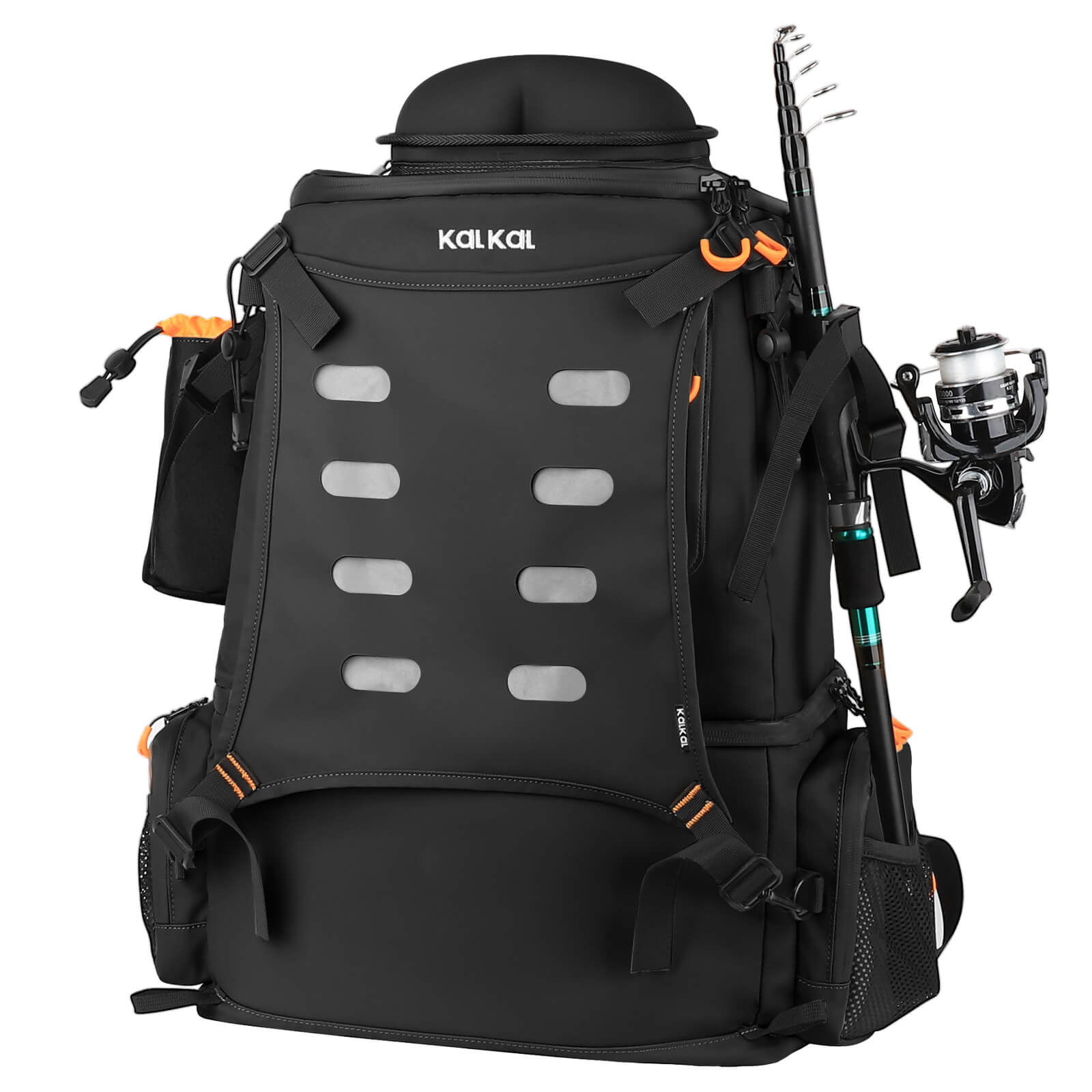
A large waterproof fishing backpack is a perfect option to pack all the stuff you need for fishing. This Kalkal fishing backpack features a cooler space to keep your catch fresh. Crafted with rugged, waterproof Oxford fabric, you don’t need to worry about your bag and gear getting wet. It also has multiple pockets, D-rings, and dedicated compartments for keeping your rods, tools, and keys to ensure everything is quickly accessible.
Shopping Guide For Fly Fishing Wear
When selecting fly fishing attire, fishermen should consider a few key factors to ensure they are comfortable and prepared for a successful day on the water.
- You must select attire that will be lightweight and breathable because fishing can be physically strenuous and you may be exposed to the weather changes. In addition, search for items that will wick away moisture to make you fresh and comfortable all around.
- One should remember weather conditions at the time of fishing and pick suitable clothes that can endure both hot and cold conditions as well as withstand the wind and rain. Think of wearing layers as you can regulate them throughout the day to adapt to various weather situations. If you have water-resistant pants or jackets, these will keep you protected on rainy days.
- Make sure that your attire is sturdy and has pockets for essentials. Search skirts with reinforced knees and butt pockets. Besides the use of UPF gear, apparel that has built-in sun protection can also be used to protect you from the sun’s UV rays.
Conclusion
At the end of the article, we can say that the right clothing is vital for comfortable and pleasant fishing with flies. Results will be reached if you begin with breathable, quick-drying fabrics and layers of clothing which allow for temperature regulation.
In this case, it is vital to bear in mind that sun protection is of paramount importance, thus opt for wide-brimmed hats and UPF-rated shirts.
The waders are crucial for the deep water and during cold weather, however, khakis and wading boots are ideal for streams located in shallow areas.
Decide upon the type of shoe you will wear for the area and remember polarized sunglasses to view fish and navigate the hazards. With the suitable equipment, you will be equipped with the awareness and know-how to present the fly. Thus, you will have another fun day in fly fishing.











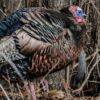








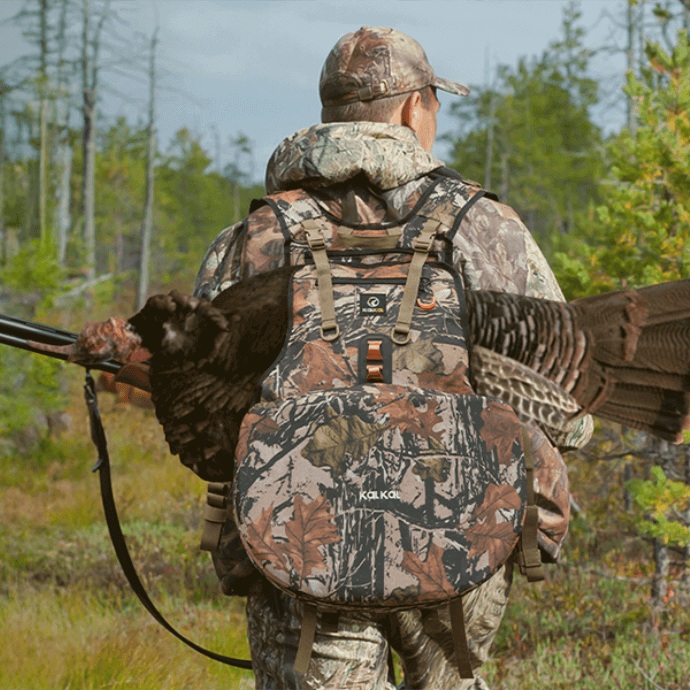
Leave a reply